5 considerations for personal protective equipment
Wearing personal protective equipment is crucial, but if you’re not wearing it the correct way, you could be doing more harm than good.
While personal protective equipment (PPE) is an important weapon in the fight against contamination and infection, all the gloves, masks and gowns in the world won’t protect anyone if they’re not used properly. It may seem simple – just put on the coat; just put on the gloves; just put on the eyewear – but the truth of the matter is that if PPE isn’t worn correctly, then it’ll be of little use.
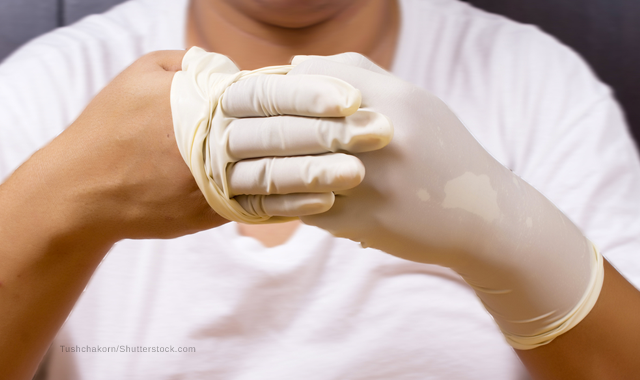
Related reading: 5 reasons you need an infection prevention coordinator
“It’s a balance between using the proper equipment and using the equipment properly,” says Joyce Moore, RDH, an infection control consultant and clinical instructor at Bristol Community College in Fall River, Mass. “PPE is what protects us, and it protects us on many levels.”
Click through the slides to find out the five considerations for using personal protective equipment.


The right mask
There’s not one mask that covers every task. Thus, clinicians match the right mask for the job at hand.
“Are you, as a practitioner, wearing the right mask for the procedure?” Moore says. “Surgical face masks are medical devices and regulated by the FDA, and the aim is to protect us against bacteria, viruses, splatter, splashes and aerosols.”
Different types of mask are used for different levels of care.
“There are generally three different levels of your basic mask,” Moore observes. “For just a quick exam, you might use a Level One mask, and they are rated by ASTM. But that’s not something you’d want to use on a regular basis because that really is a low barrier. As you go up to Level Two, that’s something that’s really appropriate for many of your hygiene appointments and dental appointments – something where the fluid, the splatter and the aerosols are moderate. That could be scaling and root planing, your prophylaxis, endodontics, some restorative treatment and some surgical procedures.
More from the author: What 2018 means for insurance coding
“But if you want to get down to what we need to do with a high-barrier mask, it’s often something we do on a daily basis,” she continues. “It could be prepping for a crown, doing complex oral surgery, or if you look at it from a hygiene standpoint, when you use an ultrasonic or piezo scaler. We really need to use the right mask for the job. If you’re using a Level One mask when you need a Level Three mask, you’re not getting the protection you need.”
Once the correct type of mask has been selected, proper use follows.
“If the mask becomes wet at any point during the procedure, you need to change it,” Moore says. “And as always, they are single use. You’re changing them between patients. So, you may go through many masks in a day.
“Often, I’ll see practitioners holding their masks down below their chin when they’re speaking to you, and that’s not protecting you,” she adds. “Unless that mask is on your face and has a good fit and a good feel, it’s not doing its job.”
Moore says many practices just don’t understand proper mask use.
“I do see that many practices don’t really know what they have and what they’re using for,” she says. “I’ll see a practice and they’ve got all Level One masks, and when I say, ‘Why is this?’ and they haven’t really looked at the different details that make that mask. There is fluid resistance, there’s particle filtration, bacterial filtration. Often, I see practices purchase based on what the rep is recommending based on price. But if you’re not using the right mask, it’s not protecting you.”


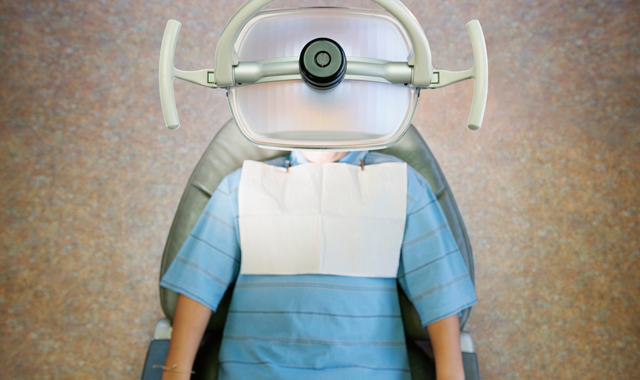
Patient protection
Clinicians are not the only ones who should wear PPE. Patients also need a layer of protection.
“That would mean protective eyewear for your patients during any and all procedures,” says Marie Fluent, DDS, an educational consultant for the Organization for Safety, Asepsis and Prevention (OSAP). “Eye protection is not regulated by OSHA for patients, but it is a best practice. There have been instances where the patient has received eye injuries due to not wearing personal protective equipment.”
Related reading: 6 scary consequences of not following good infection control practices
She mentions the 2013 case of Jenn Morrone, a New Jersey woman who suffered serious injury because she was not wearing eye protection.
“She was receiving a root canal procedure, and while the doctor was passing a syringe, it was dropped and the needle pierced her eye,” Dr. Fluent says. “Her eye became infected, and despite the best efforts of healthcare providers, she lost her eye and she has a permanent prosthesis as a result of that. Obviously, this is unintended and a complete accident, but personal eye protection for the patient would have absolutely prevented this injury from happening.”
While Morrone’s case was extreme, it still underscores the need for proper patient protection.
“Unfortunately, this is not an isolated incident,” Dr. Fluent says. “There are other incidents out there that have occurred due to patients not wearing PPE. Fortunately, it is rare and fortunately, it is very preventable.”


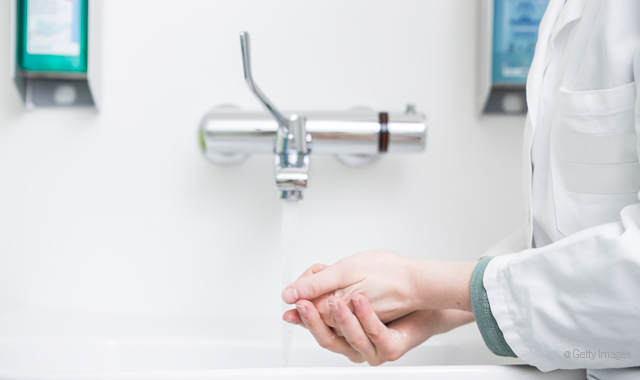
Cross-contamination
Even if one is properly wearing his or her PPE, cross-contamination is still a risk and mindfulness is essential.
“Once you have your PPE on, areas for cross-contamination still exist,” Dr. Fluent explains. “For instance, if you have an itch on your nose or on your ear and you have to touch those areas with gloved hands, you’ve entered an area for risk of cross-contamination. So, once you are completely donned with PPE, know that. Don’t touch any potentially contaminated or infected surfaces.”
Trending research: Could dentists stop stomach cancer?
She suggests other tips to avoid cross-contamination such as:
- Keep gloved hands away from the face.
- Avoid adjusting or touching other PPE.
- Change gloves if they become torn.
- Perform hand hygiene before putting on new gloves.
- Limit the surfaces and other contaminated items that are touched.
- Always remove PPE when leaving the patient care area.
- Never reuse single-use PPE such as masks and gloves.
“In other words, gloves can’t be cleaned and reused for the next patient,” Dr. Fluent says. “You can’t put your mask in your pocket and reuse it for your next patient. They are single- use, disposable items.”


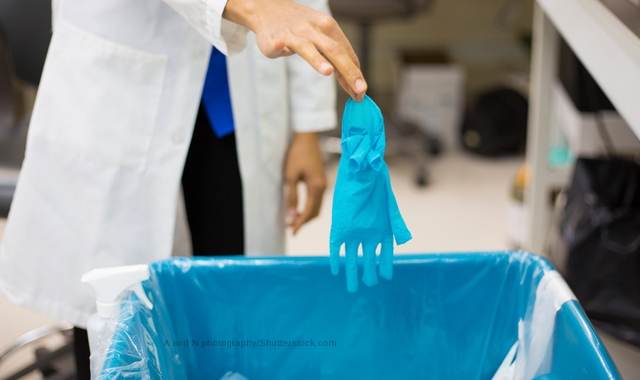
Donning and doffing PPE
Actually wearing the PPE is, of course, important, but the order in which PPE is put on (and then taken off) is just as important.
“The sequence really does need to be followed, and if you don’t, you’re going to be introducing areas of cross-contamination into your donning and doffing,” Dr. Fluent says.
Read more: The challenges of waterline disinfection
The proper order in which PPE you should be put on is:
- Hand hygiene
- Gown
- Mask
- Eyewear
- Gloves
Removing PPE is nearly the same in reverse, but not quite. The proper sequence is:
- Gloves
- Eyewear
- Gown
- Mask
- Hand hygiene
“Hand hygiene is always the first thing that you do and it’s always the last thing that you do, so your hands are fresh and clean before and after PPE donning and removal,” Dr. Fluent explains.


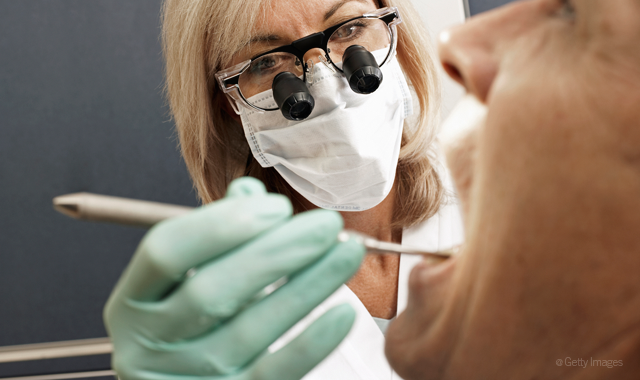
When to wear PPE
The best PPE is totally useless if it’s not worn by practitioners.
“One of the hot buttons -- and when I say, ‘hot’, I do mean, ‘hot’ -- is that many practitioners, during the summer, during the warmer months, don’t necessarily want to wear the PPE that is meant to cover exposed skin, cover mucous membranes, cover clothes,” Moore says. “PPE should cover you up to the neck and down to the wrist. Yes, it is comfortable and convenient to wear your scrubs around the office, but you’re not protecting yourself. You’re not covering that tissue that should be covered, so you need to turn the AC up. You need to make it cooler so people can wear their protective clothing appropriately.”
The areas of the office in which one wears PPE also matters.
Trending article: The top 3 software trends for 2018
“You shouldn’t be wearing your PPE, your lab coat, into the waiting room,” Moore says. “It shouldn’t be at the desk area. Whatever splash or splatter you have on the surface, if you walk to the front desk and you pick up your charts and hold them against your body, you’re contaminating those charts. You’re contaminating that paperwork. Whatever you have on your lab coat, you don’t want to introduce that into the reception area. The office staff may not be as cognizant about infection control and don’t realize if you’ve leaned against the counter, and then they touch that surface and rub their eyes or touch the phone.”
“The wearing of PPE is not negotiable,” Dr. Fluent says. “If you’ve got a hot, sunny day and you don’t want to wear long sleeves, you need to wear them anyway. Or if your mask seems to be steaming up your protective eyewear, you have to find a way around that. You have to wear it anyway.”
PPE should not be a hurdle for the clinician. It should be provided, but how it is worn is up to the person wearing it.
“It’s up to your employer to provide PPE, but it is up to you to wear it,” Dr. Fluent says.
